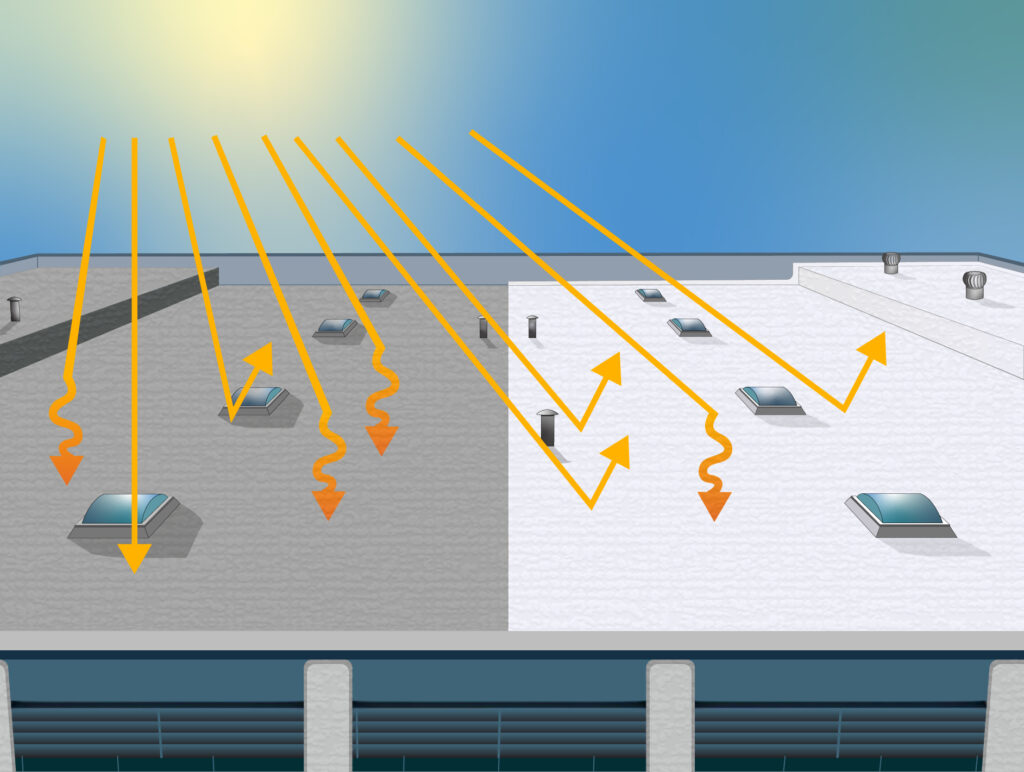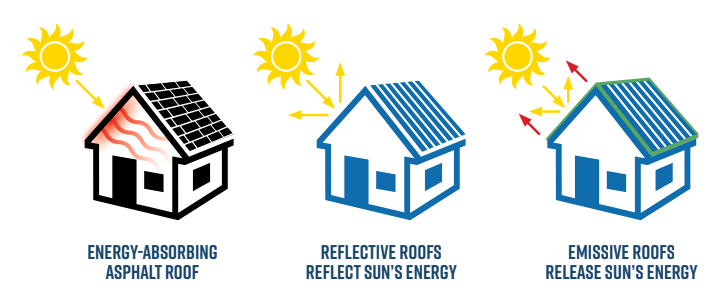As energy costs rise and environmental concerns grow, homeowners and building owners are increasingly looking for ways to reduce their carbon footprint and save money on utility bills. One popular option is a “cool roof.” But what exactly are cool roofs, and are they a worthwhile investment? At Brown’s Roofing, we’re committed to providing our clients with the latest information on energy-efficient roofing solutions, and we’re here to break down the pros and cons of cool roofs.
What is a Cool Roof?
A cool roof is a roofing system designed to reflect more sunlight and absorb less heat than a traditional roof. This can significantly reduce the temperature of the roof surface and the amount of heat that enters the building, leading to lower energy bills and a more comfortable indoor climate.
Cool roofs achieve their reflectivity through two main methods:
- Highly Reflective Materials: Cool roofs are often made with materials that have a high solar reflectance, meaning they reflect a large percentage of sunlight. These materials can include specialized coatings, membranes, or shingles.
- Light Colors: As we discussed in our previous article, lighter colors reflect more sunlight than darker colors. Cool roofs are often white or light-colored to maximize reflectivity.

Benefits of Cool Roofs
Cool roofs offer a range of benefits for homeowners and building owners:
- Reduced Energy Costs: By reflecting more sunlight and absorbing less heat, cool roofs can significantly reduce the amount of energy needed to cool a building. This can lead to lower energy bills, especially during the summer months.
- Improved Indoor Comfort: Cool roofs can help to maintain a more consistent and comfortable indoor temperature, reducing the need for excessive air conditioning.
- Extended Roof Life: By reducing the temperature of the roof surface, cool roofs can help to extend the life of roofing materials. This is because high temperatures can cause roofing materials to degrade more quickly.
- Reduced Urban Heat Island Effect: In urban areas, dark-colored roofs and pavements can contribute to the “urban heat island effect,” where cities are significantly warmer than surrounding rural areas. Cool roofs can help to mitigate this effect by reflecting more sunlight and reducing the overall temperature of the city.
- Environmental Benefits: By reducing energy consumption and the urban heat island effect, cool roofs can help to reduce greenhouse gas emissions and improve air quality.
Types of Cool Roofs
There are several different types of cool roofs, including:
- Reflective Coatings: These are specialized coatings that can be applied to existing roofs to increase their reflectivity.
- Cool Roofing Membranes: These are single-ply roofing membranes that are designed to be highly reflective.
- Cool Shingles: These are asphalt shingles that are manufactured with a reflective coating or granules.
- Green Roofs: While not strictly “cool roofs” in the traditional sense, green roofs (roofs covered with vegetation) can also provide significant cooling benefits.

Are Cool Roofs Worth the Investment?
The question of whether cool roofs are worth the investment depends on several factors, including:
- Climate: Cool roofs are most effective in hot, sunny climates where cooling costs are high.
- Building Type: Cool roofs are generally more cost-effective for commercial buildings with large, flat roofs.
- Energy Costs: The higher your energy costs, the more you stand to save with a cool roof.
- Incentives and Rebates: Many utility companies and government agencies offer incentives and rebates for installing cool roofs.
To determine whether a cool roof is right for you, it’s important to consider these factors and consult with a qualified roofing contractor.
Potential Drawbacks of Cool Roofs
While cool roofs offer many benefits, there are also some potential drawbacks to consider:
- Higher Upfront Costs: Cool roofing materials can be more expensive than traditional roofing materials.
- Reduced Heating Benefits: In colder climates, cool roofs may reduce the amount of heat that enters the building, which could increase heating costs.
- Aesthetics: Some homeowners may not like the look of a white or light-colored roof.
Brown’s Roofing: Your Cool Roof Experts
At Brown’s Roofing, we’re committed to providing our clients with the best roofing solutions for their specific needs. Our team of experienced professionals can assess your building, evaluate your energy efficiency goals, and recommend the appropriate cool roofing system.
We work closely with leading manufacturers to provide our clients with a wide range of high-quality cool roofing options. We can also help you navigate the incentive and rebate process and ensure that your cool roof is properly installed and maintained.
If you’re considering a cool roof for your home or building, contact Brown’s Roofing today for a comprehensive assessment and expert advice. We’re here to help you make an informed decision and enjoy the benefits of a cooler, more energy-efficient roof.
